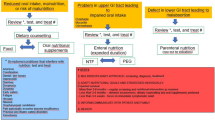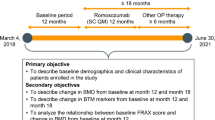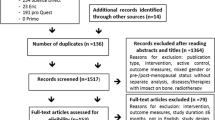Abstract
Background
Sarcopenia is associated with physical disability, increased post-operative complications, poorer tolerance to chemotherapy, and reduced survival outcome. However, little is known about the changes in body composition during chemotherapy treatment. We aimed to determine whether adjuvant or palliative chemotherapy causes the development of sarcopenia in newly diagnosed cancer patients and to reveal the relationship of sarcopenia with the duration of chemotherapy.
Methods
The study included newly diagnosed cancer patients who underwent curative surgery for primary tumor and also cancer patients who were metastatic at diagnosis. Body composition and handgrip strength were assessed by bio-electric impedance analysis (BIA) and handgrip dynamometer tools, respectively. Measurement tests were performed prior to chemotherapy, in the third and sixth months of chemotherapy.
Results
The median age of a total of 276 patients was 57.5 years (range 18–83), and majority of them (55.8%) were women. Among the pre-chemotherapy factors that could be associated with sarcopenia, male gender ≥ 65 years of age, body mass ındex (BMI) < 25, and nutritional risk screening 2002 score < 3 were found to be positively associated with sarcopenia (p < 0.001, p = 0.036, p < 0.001, and p < 0.001, respectively). In the multivariate analysis, male gender (p < 0.001) and BMI < 25 (p = 0.047) were found to be significant. Of 276 patients, 14.5% were sarcopenic prior to chemotherapy. After chemotherapy, 21.4% of them were sarcopenic at the end of the third month and 23.9% were sarcopenic at the end of the sixth month.
Conclusion
The incidence of sarcopenia was found to be increased with chemotherapy itself and its duration in both non-metastatic and metastatic cancer patients which has to be evaluated in detail in disease-specific prospective and randomized studies.
Similar content being viewed by others
References
Cruz-Jentoft AJ, Baeyens JP, Bauer JM, et al.; European Working Group on Sarcopenia in Older People (2010) Sarcopenia: European consensus on definition and diagnosis: report of the European Working Group on Sarcopenia in Older People. Age Ageing. 39(4):412-423.
Cederholm T, Barazzoni R, Austin P et al (2017) ESPEN guidelines on definitions and terminology of clinical nutrition. Clin Nutr 36(1):49–64
Chen L-K, Liu L-K, Woo J, Assantachai P, Auyeung TW, Bahyah KS, Chou MY, Chen LY, Hsu PS, Krairit O, Lee JS, Lee WJ, Lee Y, Liang CK, Limpawattana P, Lin CS, Peng LN, Satake S, Suzuki T, Won CW, Wu CH, Wu SN, Zhang T, Zeng P, Akishita M, Arai H (2014) Sarcopenia in Asia: consensus report of the Asian Working Group for Sarcopenia. J Am Med Dir Assoc 15(2):95–101
Kyle UG, Bosaeus I, De Lorenzo AD et al. (2004) Bioelectrical impedance analysis-part I: review of principles and methods. Clin Nutr 23:1226–1243, Bioelectrical impedance analysis--part I: review of principles and methods
Böhm A, Heitmann BL (2013) The use of bioelectrical impedance analysis for body composition in epidemiological studies. Eur J Clin Nutr67:S79–S85
Cruz-Jentoft AJ, Bahat G, Bauer J, et al.; Writing Group for the European Working Group on Sarcopenia in Older People 2 (EWGSOP2), and the Extended Group for EWGSOP2. (2018) Sarcopenia: revised European consensus on definition and diagnosis. Age Ageing. 48(1):16-31 https://doi.org/10.1093/ageing/afy169
Veasey-Rodrigues H, Parsons HA, Janku F, Naing A, Wheler JJ, Tsimberidou AM, Kurzrock R (2013) A pilot study of temsirolimus and body composition. J Cachexia Sarcopenia Muscle 4(4):259–265
Stene GB, Helbostad JL, Amundsen T, Sorhaug S, Hjelde H, Kaasa S, &Grønberg BH. (2014) Changes in skeletal muscle mass during palliative chemotherapy in patients with advanced lung cancer. Acta Oncol 54(3):340–348
Tan BHL, Birdsell LA, Martin L, Baracos VE, Fearon KCH (2009) Sarcopenia in an overweight or obese patient is an adverse prognostic factor in pancreatic cancer. Clin Cancer Res 15(22):6973–6979
Daly LE, NíBhuachalla ÉB, Power DG, Cushen SJ, James K, Ryan AM (2018) Loss of skeletal muscle during systemic chemotherapy is prognostic of poor survival in patients with foregut cancer. J Cachexia Sarcopenia Muscle 9(2):315–325
Prado CM, Lieffers JR, LJ MC et al (2008) Prevalence and clinical implications of sarcopenic obesity in patients with solid tumours of the respiratory and gastrointestinal tracts: a population-based study. Lancet Oncol 9:629–635
Joglekar S, Asghar A, Mott SL et al (2015) Sarcopenia is an independent predictor of complications following pancreatectomy for adenocarcinoma. J Surg Oncol 111:771–775
Lieffers JR, Bathe OF, Fassbender K, Winget M, Baracos VE (2012) Sarcopenia is associated with postoperative infection and delayed recovery from colorectal cancer resection surgery. Br J Cancer 107:931–936
Anandavadivelan P, Brismar TB, Nilsson M, Johar AM, Martin L (2016) Sarcopenic obesity: a probable risk factor for dose limiting toxicity during neo-adjuvant chemotherapy in oesophageal cancer patients. Clin Nutr 35:724–730
Martin L, Birdsell L, Macdonald N et al (2013) Cancer cachexia in the age of obesity: skeletal muscle depletion is a powerful prognostic factor, independent of body mass index. J Clin Oncol 31:1539–1547
Engin B, Kutlubay Z, Yardımcı G, Vehid HE, Ambarcıoğlu P, Serdaroğlu S, Tüzün Y (2014) Evaluation of body composition parameters in patients with psoriasis. Int J Dermatol 53(12):1468–1473
Baumgartner RN, Koehler KM, Gallagher D, Romero L, Heymsfield SB, Ross RR, Garry PJ, Lindeman RD (1998) Epidemiology of sarcopenia among the elderly in New Mexico. Am J Epidemiol 147:755–763
Janssen I, Heymsfield SB, Ross R (2002) Low relative skeletal muscle mass (sarcopenia) in older persons is associated with functional impairment and physical disability. J Am Geriatr Soc 50:889–896
Janssen I, Heymsfield SB, Baumgartner RN, Ross R (2000) Estimation of skeletal muscle mass by bioelectrical impedance analysis. J Appl Physiol 89:465–471
Chien MY, Huang TY, Wu YT (2008) Prevalence of sarcopenia estimated using a bioelectrical impedance analysis prediction equation in community-dwelling elderly people in Taiwan. J Am Geriatr Soc 56:1710–1715
Janssen I, Baumgartner R, Ross R, Rosenberg IH, Roubenoff R (2004) Skeletal muscle cutpoints associated with elevated physical disability risk in older men and women. Am J Epidemiol 159:413–421
Prado CMM, Mourtzakis M, Baracos V, Reiman T, Sawyer M, McCargar LJ (2010) Overweight and obese patients with solid tumors may have sarcopenia, poor prognosis and early features of cachexia. Int J Body Comp Res 8:7–15
World Health Organisation. Global database on body mass index. Available at: http://www.euro.who.int/en/health-topics/disease-prevention/nutrition/a-healthy-lifestyle/body-mass-index-bmi
Prado CM, Sawyer MB, Ghosh S, Lieffers JR, Esfandiari N, Antoun S, Baracos VE (2013) Central tenet of cancer cachexia therapy: do patients with advanced cancer have exploitable anabolic potential? Am J Clin Nutr 98(4):1012–1019
Nattenmüller J, Wochner R, Muley T, Steins M, Hummler S, Teucher B, Wiskemann J, Kauczor HU, Wielpütz MO, Heussel CP (2017) Prognostic impact of CT-quantified muscle and fat distribution before and after first-line-chemotherapy in lung cancer patients. PLoS One 12(1):e0169136
Goey KKH, Elias SG, van Tinteren H, Laclé MM, Willems SM, Offerhaus GJA et al (2017) Maintenance treatment with capecitabine and bevacizumab versus observation in metastatic colorectal cancer: updated results and molecular subgroup analyses of the phase 3 CAIRO3 study. Ann Oncol 28(9):2128–2134
Kurk SA, Peeters PHM, Dorresteijn B, de Jong PA, Jourdan M, Kuijf HJ et al (2018) Impact of different palliative systemic treatments on skeletal muscle mass in metastatic colorectal cancer patients. J Cachexia Sarcopenia Muscle 9(5):909–919
Scott HR, McMillan DC, Forrest LM, Brown DJ, McArdle CS, Milroy R (2002) The systemic inflammatory response, weight loss, performance status and survival in patients with inoperable non-small cell lung cancer. Br J Cancer 87:264–267
Lieffers JR, Mourtzakis M, Hall KD, McCargar LJ, Prado CM, Baracos VE (2009) A viscerally driven cachexia syndrome in patients with advanced colorectal cancer: contributions of organ and tumor mass to whole-body energy demands. Am J Clin Nutr 89:1173–1179
Yamaoka Y, Fujitani K, Tsujinaka T, Yamamoto K, Hirao M, Sekimoto M (2014) Skeletal muscle loss after total gastrectomy, exacerbated by adjuvant chemotherapy. Gastric Cancer 18(2):382–389
Awad S, Tan BH, Cui H et al (2012) Marked changes in body composition following neoadjuvant chemotherapy for oesophagogastric cancer. Clin Nutr 31(1):74–77
Jung H-W, Kim JW, Kim J-Y et al (2014) Effect of muscle mass on toxicity and survival in patients with colon cancer undergoing adjuvant chemotherapy. Support Care Cancer 23(3):687–694
Khamoui AV, Kim JS (2012) Candidate mechanisms underlying effects of contractile activity on muscle morphology and energetics in cancer cachexia. Eur J Cancer Care 21:143–157
Ge J, Azria D, Gourgou-bourgade S, Martel-laffay I, Hennequin C, Etienne P et al (2017) Comparison of two neoadjuvant chemoradiotherapy regimens for locally advanced rectal cancer: results of the Phase III Trial ACCORD 12/0405-Prodige 2. J Clin Oncol 28:1638–1644
Sorensen JC, Cheregi BD, Timpani CA, Nurgali K, Hayes A, Rybalka E (2016) Mitochondria: inadvertenttargets in chemotherapy-induced skeletal muscle toxicity and wasting? Cancer Chemother Pharmacol 78:1–11
Barreto R, Waning DL, Gao H, Liu Y, Teresa A (2016) Chemotherapy-related cachexia is associated with mitochondrial depletion and the activation of ERK1/2 and p38 MAPKs. Oncotarget 7:43442–43460
Gilliam LA, St. Clair DK (2011) Chemotherapy-induced weakness and fatigue in skeletal muscle: the role of oxidative stress. Antioxid Redox Signal 15:2543–2563
Bonifati DM, Ori C, Rossi CR, Caira S, Fanin M, Angelini C (2000) Neuromuscular damage after hyperthermic isolated limb perfusion in patients with melanoma or sarcoma treated with chemotherapeutic agents. Cancer Chemother Pharmacol 46:517–522
Scheede-Bergdahl C, Jagoe RT (2013) After the chemotherapy: potential mechanisms for chemotherapy-induced delayed skeletal muscle dysfunction in survivors of acute lymphoblastic leukaemia in childhood. Front Pharmacol 4:1–7
Pamoukdjian F, Bouillet T, Lévy V, Soussan M, Zelek L, Paillaud E (2018) Prevalence and predictive value of pre-therapeutic sarcopenia in cancer patients: a systematic review. Clin Nutr 37(4):1101–1113
Kim EY, Kim K, Kim YS, Ahn HK, Jeong YM, Kim JH, Choi W-J (2017) Prevalence of and factors associated with sarcopenia in Korean cancer survivors: based on data obtained by the Korea National Health and Nutrition Examination Survey (KNHANES) 2008–2011. Nutr Cancer 69(3):394–401
Melton LJ, Khosla S, Crowson CS et al (2000) Epidemiology of sarcopenia. J Am Geriatr Soc 48:625–630
U.S. Cancer Statistics Working Group (2013) US cancer statistics: 1999- 2009 incidence and mortality web-based report. USDHHS, CDC, Atlanta
Sayer AA, Syddall H, Martin H et al (2008) The developmental origins of sarcopenia. J Nutr Health Aging 12:427–432
Thompson DD (2007) Aging and sarcopenia. J Musculoskelet Neuronal Interact 7:344–345
Paddon-Jones D, Short KR, Campbell WW, Volpi E, Wolfe RR (2008) Role of dietary protein in the sarcopenia of aging. Am J Clin Nutr 87:1562S–1566S
Morishita S, Kaida K, Tanaka T, Itani Y, Ikegame K, Okada M, Ishii S, Kodama N, Ogawa H, Domen K (2012) Prevalence of sarcopenia and relevance of body composition, physiological function, fatigue, and health-related quality of life in patients before allogeneic hematopoietic stem cell transplantation. Support Care Cancer 20(12):3161–3168
Kondrup J, Rasmussen HH, Hamberg O, Stanga Z, Ad Hoc ESPEN Working Group (2003) Nutritional risk screening (NRS 2002): a new method based on an analysis of controlled clinical trials. Clin Nutr 22:321–336
Wang S-L, Zhuang C-L, Huang D-D, Pang WY, Lou N, Chen FF, Zhou CJ, Shen X, Yu Z (2015) Sarcopenia adversely impacts postoperative clinical outcomes following gastrectomy in patients with gastric cancer: a prospective study. Ann Surg Oncol 23(2):556–564
Miyamoto Y, Baba Y, Sakamoto Y, Ohuchi M, Tokunaga R, Kurashige J et al (2015) Negative impact of skeletal muscle loss after systemic chemotherapy in patients with unresectable colorectal cancer. PLOS ONE 10(6):e0129742
Broughman JR, Williams JR, Deal GR, at al. (2015) Prevalence of sarcopenia in older patients with colorectal cancer. Journal of Geriatric Oncology 6(6):442–445
Acknowledgments
The authors gratefully acknowledge the support from friends Yasemin Payam, Betul Akdogan, Oksan Kacmaz, and Songul Uluc Ozaltaş.
Author information
Authors and Affiliations
Contributions
Study concept: A Alacacioglu and U Oflazoglu. Study design: U Oflazoglu and A Alacacioglu. Data acquisition: U Oflazoglu, S Saray, Y Yildiz, and H Taskaynatan. Quality control of data: U Oflazoglu and A Alacacioglu. Data analysis and interpretation: U Oflazoglu and A Alacacioglu. Statistical analysis: U Oflazoglu and A Alacacioglu. Manuscript preparation: U Oflazoglu and U Varol. Manuscript editing: U Varol, A Alacacioglu, and T Salman. Manuscript review: U Varol, A Alacacioglu, Y Kucukzeybek, T Salman, and MO Tarhan
Corresponding author
Ethics declarations
Conflict of interest
The authors declare that they have no conflict of interest.
Ethical approval
The study was approved by the Institutional Review Board at Izmir Katip Celebi University.
Statement of informed consent
All patients provided written informed consent to participate in the study.
Additional information
Publisher’s note
Springer Nature remains neutral with regard to jurisdictional claims in published maps and institutional affiliations.
Rights and permissions
About this article
Cite this article
Oflazoglu, U., Alacacioglu, A., Varol, U. et al. Chemotherapy-induced sarcopenia in newly diagnosed cancer patients: Izmir Oncology Group (IZOG) study. Support Care Cancer 28, 2899–2910 (2020). https://doi.org/10.1007/s00520-019-05165-6
Received:
Accepted:
Published:
Issue Date:
DOI: https://doi.org/10.1007/s00520-019-05165-6




